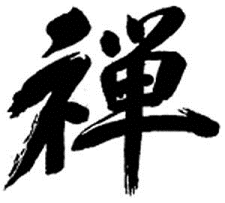Kyle wrote in 2013:
I'm not sure about the 'everything arising from rigpa' but Tsoknyi Rinpoche's comments regarding rigpa completely pervading all things, and by understanding rigpa you understand all phenomena... are pointing to the fact that once recognition of one's nature has occurred, the delusion that apperceives phenomena as objectively arising qualities of experience which appear to a mind, is overcome. So that is to say, the recognition of rigpa is essentially the very first time one's experience is known accurately, and that knowledge is then the foundation for one's practice in dzogchen. It's not only the refutation that appearances are the samsaric dualistic mind, but the very idea that appearances and phenomena are subsumed into the mind or consciousness. It's the notion that the objective phenomena are non-dual with a subjective mind or consciousness, and that there is a union of those polarities.
The Dzogchen view is that both the mind/consciousness and the objective appearances are byproducts of delusion, just as Longchenpa says in the quote above; "Likewise, various kinds of phenomena are appearing in the deluded mind because of the interdependent origination of the causes and conditions of delusion." The mind/consciousness and phenomena viewed as objective, separate or subsumed within that mind are both products of delusion, grasping and clinging, imputation and conceptualization etc. The moment a mind or consciousness is posited, that which is not-that-mind arises, that is the dependent origination.
The idea is to see that the mind/consciousness and the phenomena are dependently originated and therefore both are rendered empty if that is ascertained successfully. Also, nothing truly arises from the basis (gzhi), the basis simply displays it's appearance as the five lights, but since that spontaneously and naturally formed display (lhun grub) is primordially pure (ka dag) it's not established (nor unestablished) in any way. Only when that display isn't recognized to be self-display, does phenomena arise. The basis is never involved in delusion in any way nor does it display delusion, delusion arises due to non-recognition.
The recognition of rigpa is simply the knowledge or discernment which results from ascertaining the display of the basis to be self-display. The Mahamudra instructions which say 'everything is mind' is usually a line of reasoning which runs like so: 'everything is mind, mind is empty' so it's a way of helping the aspirant to achieve recognition (if recognition didn't occur in direct introduction). Everything is the mind deems everything as nondual with the mind, and then the mind is empty i.e. insubstantial, unfindable, unestablished. It's just a way to say that which you perceive as 'objective phenomena' is truly neither the same nor different than the mind, both are imputed designations. Since dzogchen is resting in rigpa, the nature of the mind has already been recognized and so it's emptiness is implicit in the view to begin with.
I'm not sure about the 'everything arising from rigpa' but Tsoknyi Rinpoche's comments regarding rigpa completely pervading all things, and by understanding rigpa you understand all phenomena... are pointing to the fact that once recognition of one's nature has occurred, the delusion that apperceives phenomena as objectively arising qualities of experience which appear to a mind, is overcome. So that is to say, the recognition of rigpa is essentially the very first time one's experience is known accurately, and that knowledge is then the foundation for one's practice in dzogchen. It's not only the refutation that appearances are the samsaric dualistic mind, but the very idea that appearances and phenomena are subsumed into the mind or consciousness. It's the notion that the objective phenomena are non-dual with a subjective mind or consciousness, and that there is a union of those polarities.
The Dzogchen view is that both the mind/consciousness and the objective appearances are byproducts of delusion, just as Longchenpa says in the quote above; "Likewise, various kinds of phenomena are appearing in the deluded mind because of the interdependent origination of the causes and conditions of delusion." The mind/consciousness and phenomena viewed as objective, separate or subsumed within that mind are both products of delusion, grasping and clinging, imputation and conceptualization etc. The moment a mind or consciousness is posited, that which is not-that-mind arises, that is the dependent origination.
The idea is to see that the mind/consciousness and the phenomena are dependently originated and therefore both are rendered empty if that is ascertained successfully. Also, nothing truly arises from the basis (gzhi), the basis simply displays it's appearance as the five lights, but since that spontaneously and naturally formed display (lhun grub) is primordially pure (ka dag) it's not established (nor unestablished) in any way. Only when that display isn't recognized to be self-display, does phenomena arise. The basis is never involved in delusion in any way nor does it display delusion, delusion arises due to non-recognition.
The recognition of rigpa is simply the knowledge or discernment which results from ascertaining the display of the basis to be self-display. The Mahamudra instructions which say 'everything is mind' is usually a line of reasoning which runs like so: 'everything is mind, mind is empty' so it's a way of helping the aspirant to achieve recognition (if recognition didn't occur in direct introduction). Everything is the mind deems everything as nondual with the mind, and then the mind is empty i.e. insubstantial, unfindable, unestablished. It's just a way to say that which you perceive as 'objective phenomena' is truly neither the same nor different than the mind, both are imputed designations. Since dzogchen is resting in rigpa, the nature of the mind has already been recognized and so it's emptiness is implicit in the view to begin with.










